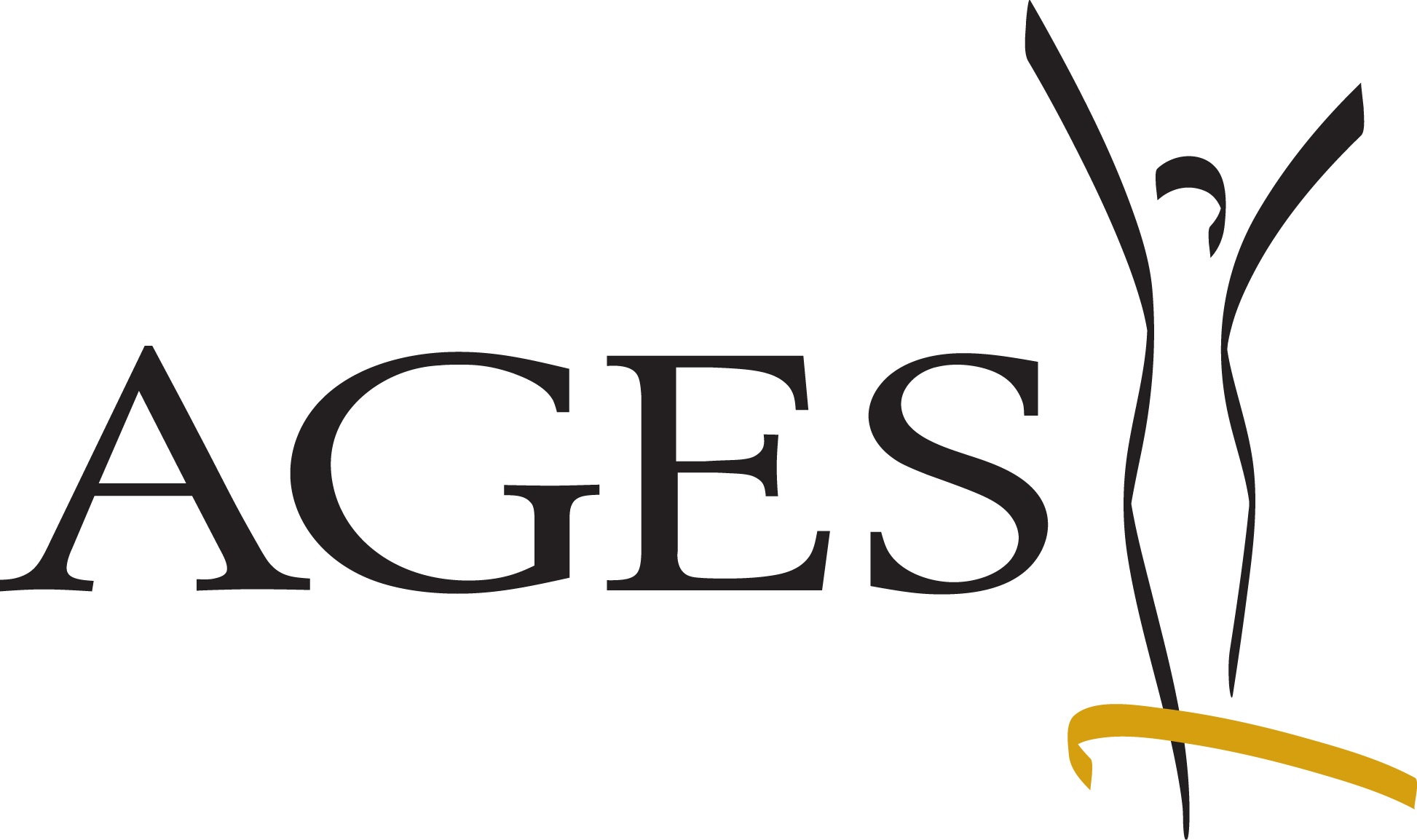
Florian Heigl
Why Math?
Relevance of mathematics lessons from the students' perspective
The relevance that students attribute to mathematics education is a crucial variable for its success. Against this background, it is surprising that there is little international scientific evidence on these ideas. Instead, it is evident in various countries, including Austria, that students in secondary school have at best fragile ideas about the relevance of mathematics instruction: For example, it is usually emphasized that mathematics instruction serves to cope with everyday situations, but then it is also quickly recognized that this explanation does not apply to the content currently covered in class. Against this background, it is questionable how these ideas can be captured and further developed in order to enable more students to learn mathematics in a meaningful way. In this sense, this project sees itself as a contribution to the further development of mathematics education in Austria and beyond.
This project relies on the expertise of students as Citizen Scientists in the collection and analysis of data. The project aims to identify phenomena and generate explanations. The guiding research questions are which ideas about the relevance of mathematics education exist, how these can be meaningfully collected, and how they can be developed and evolve.
Students from four eighth- or ninth-grade classes at two middle schools and two high schools participate*. They will be interviewed first, but are already active as Citizen Scientists in the analysis of the data by adding their perspectives to those of the research team. At a research day at the university, further ideas on relevance to mathematics are presented and discussed with them. Some students stay on longer in the project if they wish, refining the survey instrument, collecting data themselves in parallel classes, and evaluating it on a second research day. The added value for the students involved is, on the one hand, that they gain insights into how the research results come about and, on the other hand, that they themselves can open up new dimensions of the relevance of mathematics for themselves. Teachers learn new methods to address the relevance of mathematics in the classroom and to motivate their students for mathematics lessons.
*Participation is restricted to these students and therefore closed to outsiders.
This is a project funded by the Federal Ministry of Education, Science and Research.

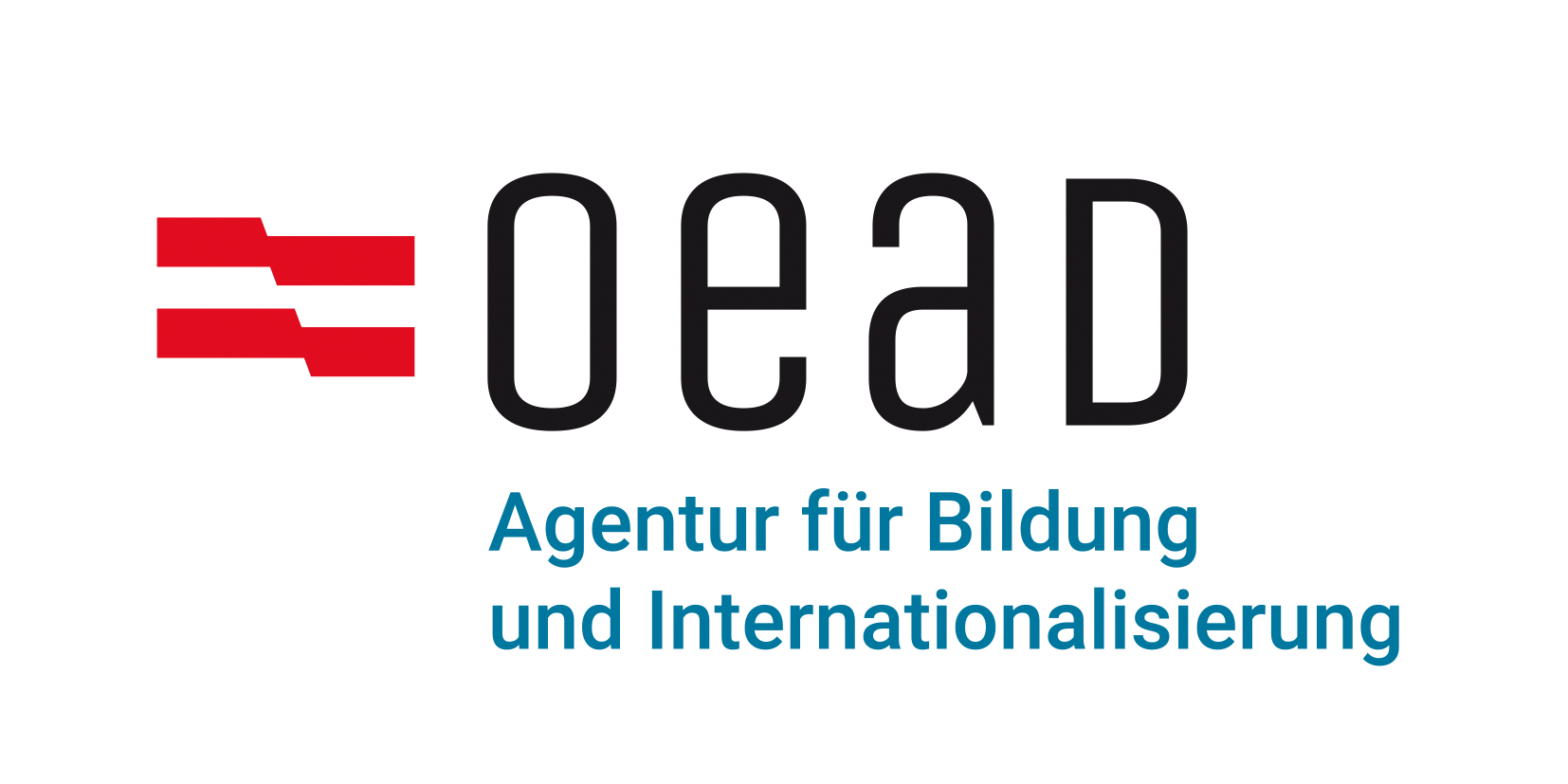
Market garden centres
Innovation to strengthen the Austrian fresh vegetable supply
Market garden centres work according to so-called bio-intensive methods. This means utilising the maximum possible natural yield potential on the land. This yield potential results from the respective location, the climatic conditions (temperature, precipitation, wind, etc.), the production methods and, to a large extent, the soil itself. Beside the type of soil and texture, the thickness of the individual soil layers, the condition of the soil in terms of soil fertility and soil health is of enormous importance for market gardeners. While the term soil fertility refers more to the function of productivity (mineral, physical and biological aspects), the term soil health is defined more systemically and expanded to include other soil functions. In addition to the productivity function, the water storage function, the habitat function for plants and soil organisms and their diversity, the nutrient management function and the climate function as a carbon store are relevant for market garden centres. In order to run a market garden successfully and sustainably, the soil condition in terms of its fertility and health must not only be maintained, but even improved in the course of cultivation. The goal in every market garden is therefore not only sustainable soil management, but also regenerative soil management. In this project, soil data such as aggregate stability, soil structure, temperature, moisture, infiltration, degree of mulch cover and compaction data are collected according to scientific principles. Data such as the degree of mulch coverage is collected directly from the gardeners, as we collect the data at 14-day intervals. The respective test facilities and test questions were customised together with the respective farm, as we attach great importance to practical questions.
For this project, participation is closed.
Restore4Life
What can we do to protect our wetlands and floodplains in Europe? What does the water management need to implement measure for the benefit of both the environment and the human society?
The Horizon Europe project Restore4Life aims at offering an online system that supports the restoration of wetlands in Europe. One important aspect is the development of easily applicable and meaningful methods to assess the state and functionality of wetlands before and after the restoration. This enables us to see whether the measures are sustainable for the future of the wetlands, for the climate and for us.
Why Citizen Science?
The integrity of wetlands can be assessed via a multitude of factors. Biodiversity indicates the health of the ecosystem, plant biomass shows how much carbon can be stored. In order to assess these data across Europe, we need methods which can be used also by non-experts. Together with Citizen Scientists, we want to develop, adapt, test, and optimize such methods so that we can offer them to other countries willing to implement restoration activities. We especially invite school classes to participate in our project.
The opportunities for joining the project are manifold: you can determine bird species via their songs, estimate the diameter and height of trees, evaluate orthophotos and satellite images, and many other things.
Where:
- March-Thaya-floodplains near Hohenau
- Salzach-Floodplains
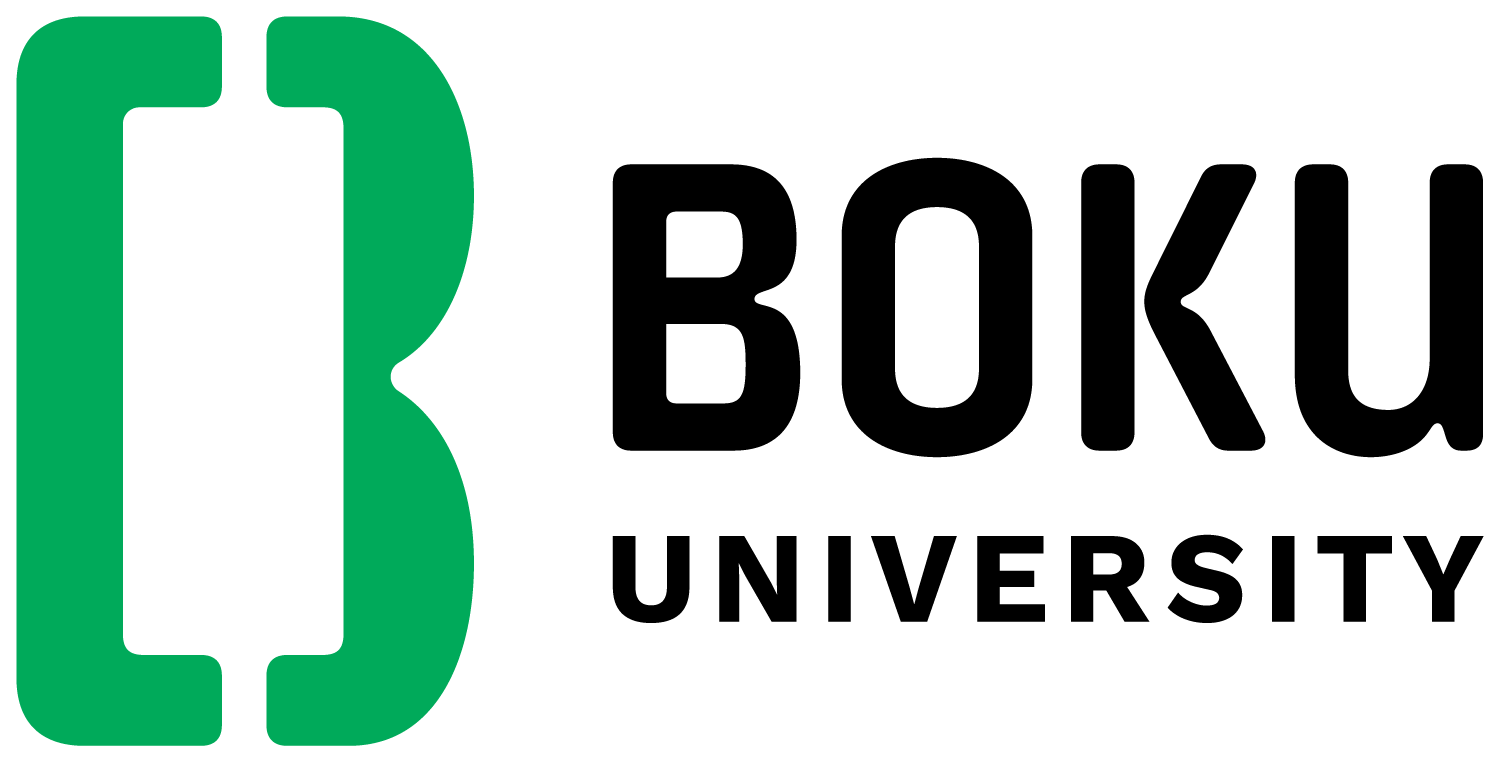
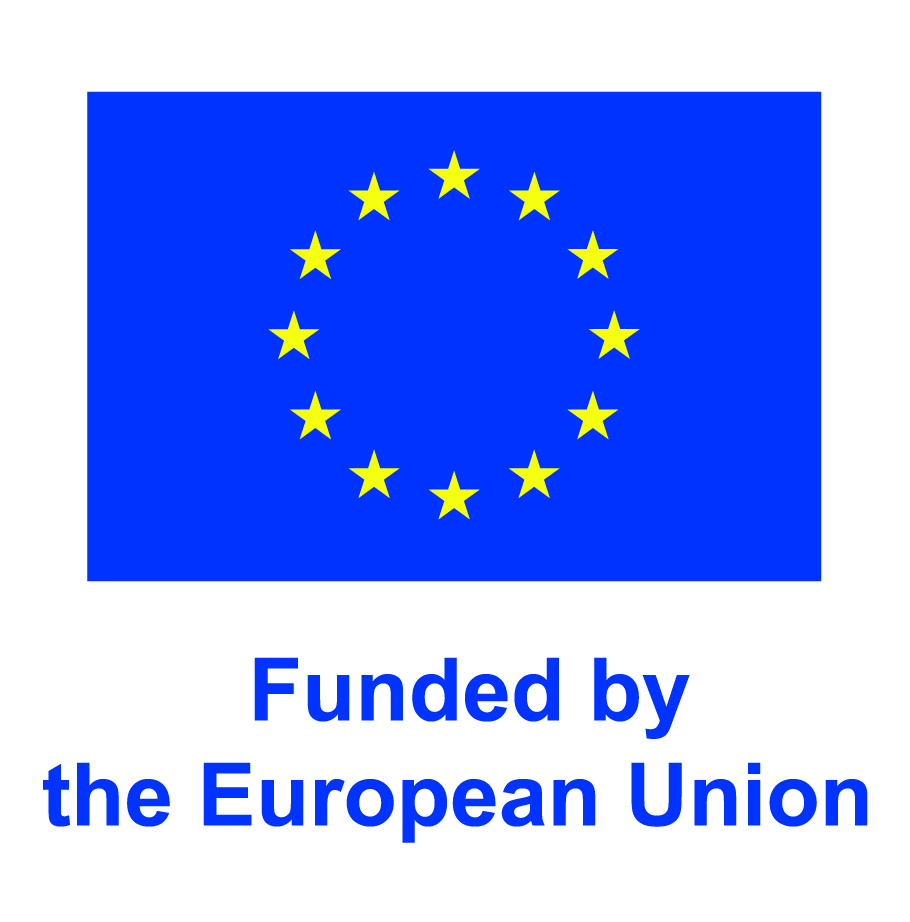
City Layers
Citizen Mapping as a Practice of City-Making
The project “City Layers: Citizen Mapping as a Practice of City-Making”, funded by the Austrian Science Fund (FWF) introduces a contemporary framework for city-mapping which centres on citizen experience of urban space as an integrative way to contribute to more egalitarian city design. Within the frame of the Citizen Science Award 2023, the City Layers app has been developed in collaboration with students, citizens and researchers all interested in democratising and diversifying how cities are formed.
Hypotheses
The research hypothesises that current data collection methods have prioritised simulated and measurable data, alienating and excluding diverse data sets. City Layers utilises innovative and contemporary data collection methods which allow for the recording of subjective experiences of the city. The project thus proposes a more inclusive and adaptable form of collecting information for urban design, whether it be material or immaterial, based on terms dictated by citizens.
Objectives
The research aims to deepen the engagement between citizens and urban design using the City Layers app by inviting them to identify, record and reflect upon a range of different material and immaterial ‘layers’ of their cities. These include accessibility, noise, safety, climate resilience, aesthetics, amenities and many more. This city mapping app serves as a means of communication between cities and their citizens, generating a contemporary, critical form of data that is collectively generated, managed and cared for.
Approach and methods
Through City Layers – a digitised participatory tool for urban design – citizens are invited to use tags, textual comments, photographs, suggestions and votes to articulate their views on a particular urban surrounding. By recognising and voicing their subjective experiences in specific spaces, citizens procure meaning and values, but also provide valuable data on how these spaces can be improved. Citizens can add thoughts on how urban places can be improved, or they can immerse themselves in the information about their urban surroundings mapped by others. Citizens' contributions are made available online as a form of commons for active use. This innovative mapping tool thus aims to reorganise individual observations into collective knowledge and brings out the strengths of citizen participation in urban design. The collected data is intended to enable a basis for a better dialogue between citizens and urban planners. Therefore, the research recognises the citizen science approach as a democratic and urgent strategy for identifying the essential components which constitute a city.
Picture Gallery
-
 © Lovro Koncar-Gamulin © Lovro Koncar-Gamulin
© Lovro Koncar-Gamulin © Lovro Koncar-Gamulin -
 © Lovro Koncar-Gamulin © Lovro Koncar-Gamulin
© Lovro Koncar-Gamulin © Lovro Koncar-Gamulin -
 © Lovro Koncar-Gamulin © Lovro Koncar-Gamulin
© Lovro Koncar-Gamulin © Lovro Koncar-Gamulin -
 © Lovro Koncar-Gamulin © Lovro Koncar-Gamulin
© Lovro Koncar-Gamulin © Lovro Koncar-Gamulin -
 © Lovro Koncar-Gamulin © Lovro Koncar-Gamulin
© Lovro Koncar-Gamulin © Lovro Koncar-Gamulin
https://www.citizen-science.at/en/immerse/worldwide/author/934-florianheigl?start=20#sigProId5975b3fb95
U3Green
Promotion of child and youth-friendly urban landscapes through participatory research on urban green
The development of child- and youth-friendly cities is becoming increasingly important due to the deteriorating quality of life in urban areas. An important contribution to this relates to the provision of urban green suitable for young people and their involvement in the future design of urban landscapes. However, it must be taken into account that children and the youth make demands on urban green that are often not sufficiently known and which differ from what adults need and from what adults consider important for children and the youth. As a result, the participation of young people in the collection, evaluation and communication of what is important to them with regard to urban green plays an important role. But the involvement of young people in participatory initiatives is difficult, often falls short of expectations and is linked to various open questions, such as what are suitable tools and strategies to inspire and involve children and the youth in participatory initiatives.
With regard to these challenges, „u3Green“ pursues three goals:
- basic knowledge about the importance of urban green for children and the youth and how they actually use urban green will be gathered;
- a web-based, child and youth-centric application will be developed to collect, evaluate and share information on urban green;
- the results on the importance of urban green for children and the youth will be communicated using suitable geovisualization platforms such as interactive online maps and story maps.
Within the framework of various participation formats young people are involved in achieving the “u3Green” project goals using various methods (participatory design, participatory mapping, spatial data science, visual/ cartographic communication) and IT and geoinformatics tools (including ESRI applications). On the one hand, this refers to the participation of school students from the partner schools in workshops and spotlight events in order to discuss questions related to the challenges mentioned above and to develop initial solutions. On the other hand, school students from the partner schools contribute to the detailed answering of the questions within the framework of internships and workshop camps lasting several days.
Especially through the participation formats, "u3Green" supports the training of specialist knowledge and skills in the STEM field (i.e. teaching and study subjects relating to mathematics, computer science, natural sciences and technology) and other "soft skills" (e.g. science literacy) - in addition to an improved consideration of urban green spaces for young people in planning processes and an increased building of social awareness regarding urban green.
Co-operation partners: Österreichischer Dachverband für Geoinformation, Private Pädagogische Hochschule der Diözese Linz, Salzburger Institut für Raumordnung und Wohnen, Spatial Services GmbH;
Partners from Economy and Society: Naturpark Weißbach, Universität 55-PLUS, Paris Lodron Universität Salzburg, Wissensstadt Salzburg;
Participating schools: Akademisches Gymnasium Salzburg, ASO Stadt Salzburg, BG Zaunergasse, Salzburg, BORG Oberndorf, Holztechnikum Kuchl, Werkschulheim Felbertal; BG & BRG Keimgasse Mödling
Video
@projekt.u3green Wir brauchen deine Stimme! ☀️ #u3green #plus_1622 #fyp #foryoupage #fy ♬ clocks - -
u3Green is funded by the Federal Ministry of Education, Science and Research in the Sparkling Science 2.0 program
Mosquito Alert
Mosquito Alert is a citizen science project that allows tiger mosquitoes and other mosquitoes to be easily reported using a free app. Tiger mosquitoes are always smaller than a 1-cent coin, have a single white line on the back of the head and thoraxand white stripes on the body and legs. The submitted photos are examined by national and international experts and the finds are then displayed anonymously on a publicly accessible map.
Tiger mosquitoes are non-native mosquitoes that originally come from Asia. In recent decades, this species has spread widely in Europe. Tiger mosquitoes are not only a nuisance, they can transmit a variety of pathogens (e.g. the Zika virus or the dengue virus). If tiger mosquitoes spread in Austria, these diseases could also be transmitted in our country. In addition to tiger mosquitoes, other mosquito species can be reported with the app. These are the also non-native species Japanese bush mosquito, Korean bush mosquito and the yellow fever mosquito, which has not yet been detected in Austria. These species are also capable of transmitting certain pathogens and could displace native species. Furthermore, finds of the native common house mosquito can be reported. This is the most important of the native species in the spread of pathogens (e.g. West Nile virus).
Background
The recording of the spread of mosquito species in a country is usually carried out by labor-intensive and costly monitoring projects carried out by experts. Since comprehensive expert monitoring is difficult (and not affordable), reports from citizens often represent a valuable addition to such monitoring projects. For example, the first findings of the Asian tiger mosquitoes in Vienna were reports made by citizens. To offer citizens a tool to report possible tiger mosquitoes and other non-native mosquito species as uncomplicated as possible, the app “Mosquito Alert” was developed. This project, originally from Spain, has been running since 2014 and is coordinated by the institutions CREAF (Centre de Recerca Ecològica i Aplicacions Forestals), UPF (Universitat Pompeu Fabra) ICREA (Institución Catalana de Investigación y Estudios Avanzados) and CEAB-CSIC (Centro de Estudios Avanzados de Blanes). In Spain, more than 18,300 mosquitoes have been reported with the app so far. As part of the AIM-COST5 (AIM = Aedes Invasive Mosquitoes, COST = European Cooperation in Science and Technology) and Versatile Emerging infectious disease Observatory (VEO) projects, the app, via which the mosquitoes are reported, was adapted to the European situation in 2020 by expanding the range of species and the app is now available in 18 different languages. The project is coordinated by AGES for Austria and is carried out in cooperation with other national experts from Vetmeduni Vienna (Priv.Doz. Dr. Hans-Peter Führer, Dr. Maria Unterköfler) and the University of Vienna (Carina Zittra, PhD). If a participant sees one of the target species (instructions for recognition and differentiation are included in the app), one or more photos of this finding can be uploaded using the app. It is important to ensure that the pattern on the thorax and the hind legs is clearly visible, as these are decisive for species identification. The uploaded photos are then examined by three (of approx. 50) experts, at least one of whom is a national expert. They then decide whether it is one of the target species, and if so, which one. Due to the visibility of the identification features in the photo, a find is either “definately” or “probably” assigned to a certain species. The reported findings are displayed anonymously on a publicly accessible map together with the photo. This map could then support health authorities or mosquito control programs in finding out where intervention is necessary. The collected data set is also freely accessible and provides scientists with important information about the distribution of the recorded species. In addition, publicly accessible breeding grounds can be reported via the Mosquito Alert app, which are then also displayed on the map. This can support the implementation of control measures, as it shows where there is still a need for action. Furthermore, mosquito bites can also be reported. This information is not currently displayed on the map but could also indicate in the future where the nuisance for citizens is particularly high and therefore measures may be necessary.
Overview of mosquito species
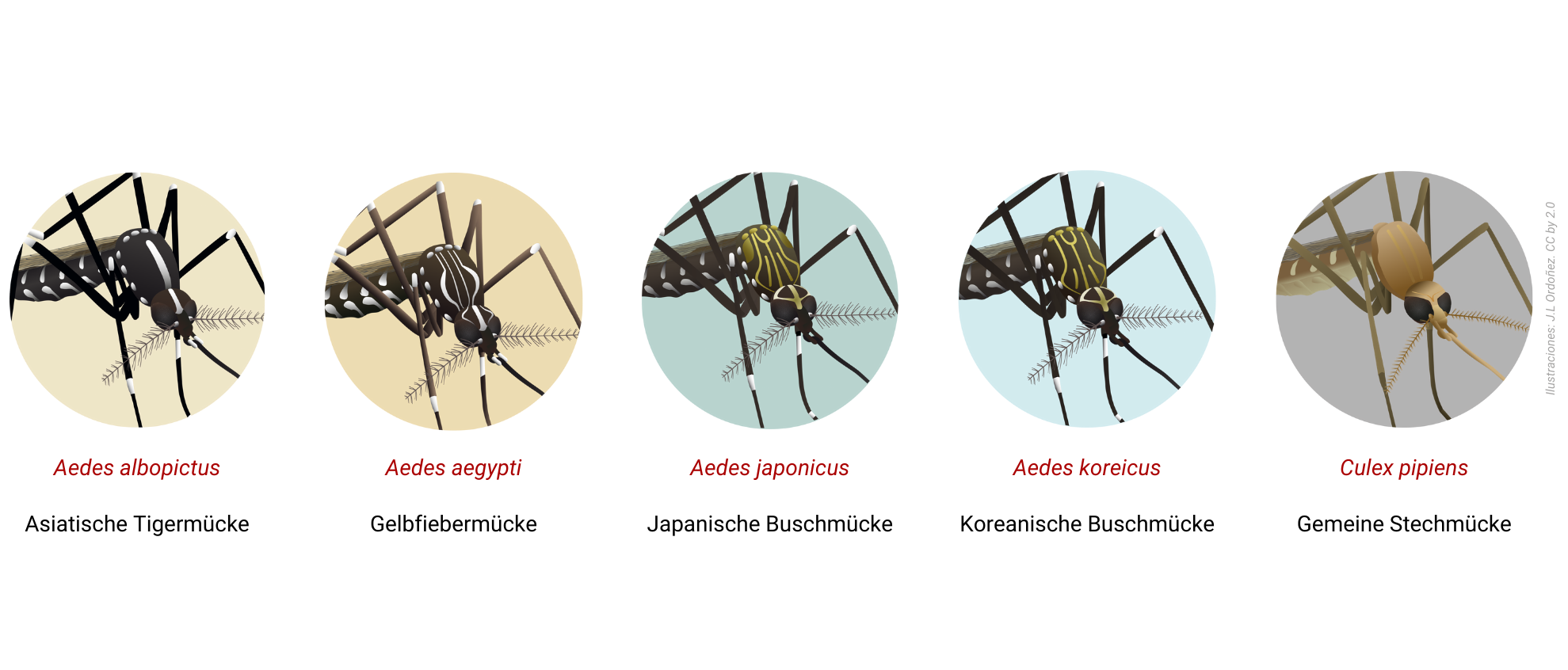
Citizen Science Seminar
In spring 2024, poject coordinator Karin Bakran-Lebl held a lecture about mosquito alert as part of the lecture series "Citizen Science Seminar" at the University of Natural Resources and Life Sciences Vienna (BOKU): "Mosquito Alert: In search of the tiger mosquito with Citizen Scientists" (in German). At the end of this page you can watch the video recording of the lecture.
Podcast episode
In July 2024, project coordinator Karin Barkan-Lebl was a guest on the Österreich forscht podcast Wissen macht Leute - you can listen to the episode here (in German).
More information (in German)
Humane PapilloWAS?
In order to find out how information about HPV needs to be prepared to reach the target groups, we are working together with parents, teachers and students in the project “Humane PapilloWAS?” to reveal what is known about HPV and which misinformation is circulating.
Background
Only 46% of the population in Austrian are aware about human papilloma viruses, or HPV, and only 34% associate HPV with cancer. This shows that there are gaps in the population's knowledge of a virus that almost everyone becomes infected with in the course of their life. A vaccination against HPV, which results in 90% protection against cervical cancer, could even eradicate cervical cancer and other HPV related cancer types if the majority of the population were vaccinated. HPV can cause 6 different types of cancer that also affect men. The vaccination should ideally be given to children between the ages of 9 and 13, as they develop the best immune response to the vaccine and the virus. It is therefore important that particularly parents and their children are informed about HPV through the right information channels. In order to find out how information about HPV needs to be prepared to reach the target groups, it is necessary to work together with the relevant groups of people already from the beginning. The project is supported by biomedical scientists, communication experts and people affected by cervical cancer.
Goals
The aim of the project is to give the population an understanding of HPV and its possible effects in order raise their health competence. It can also be a basis for communication measures in similar health-oriented projects in the future.
Realisation
In this project, the most effective information channels and methods were identified in several workshops in 2023 together with citizens, in order to develop a communication strategy for a good education campaign.
Within a smaller advisory board of citizens, a survey was developed in which around 900 people participated. The results will be evaluated in 2024 and published in an open access journal. Also in 2024, a communication campaign in collaboration with Citizen Scientists will be realised in Salzburg. Moreover, further events will take place to increase HPV awareness.
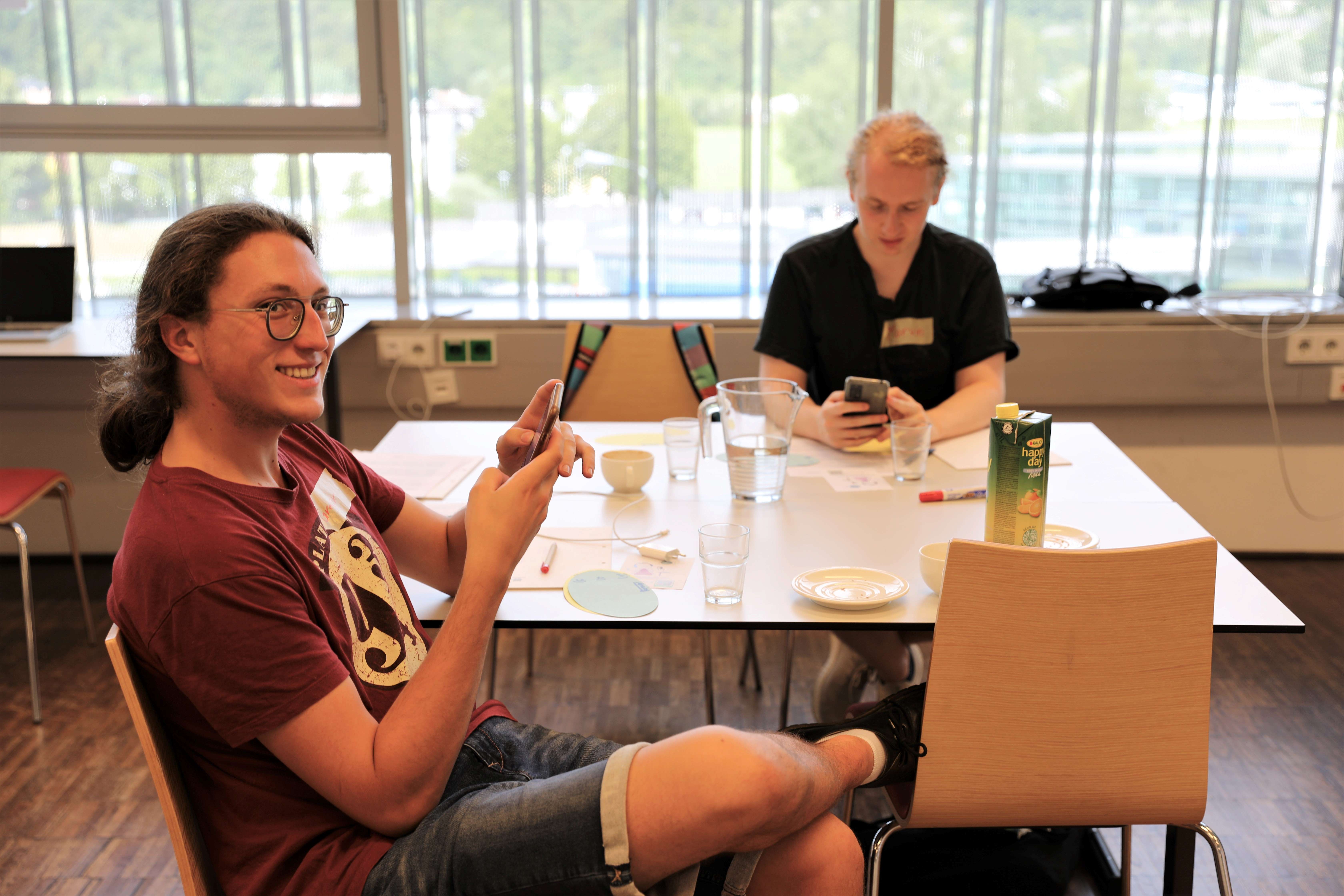
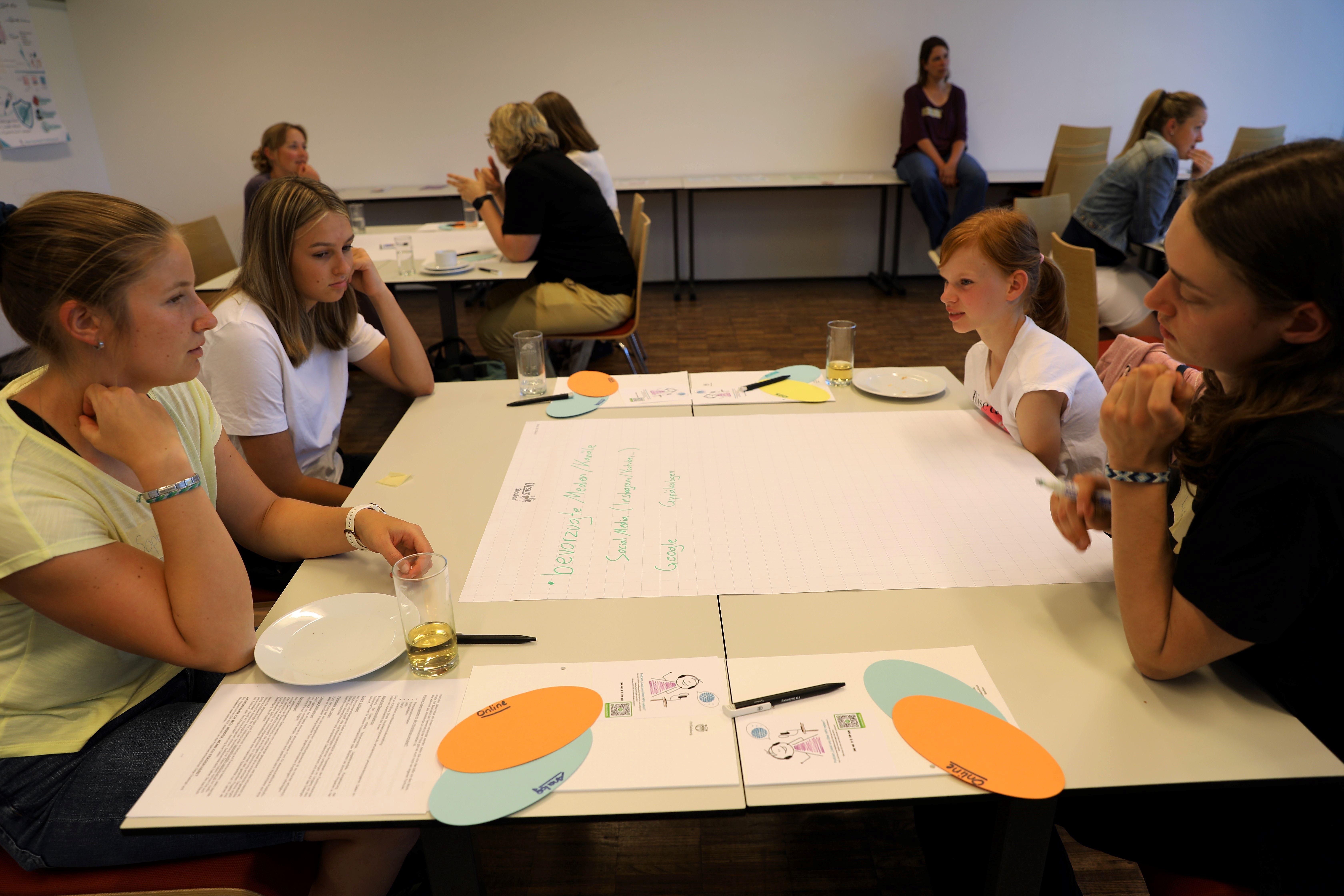
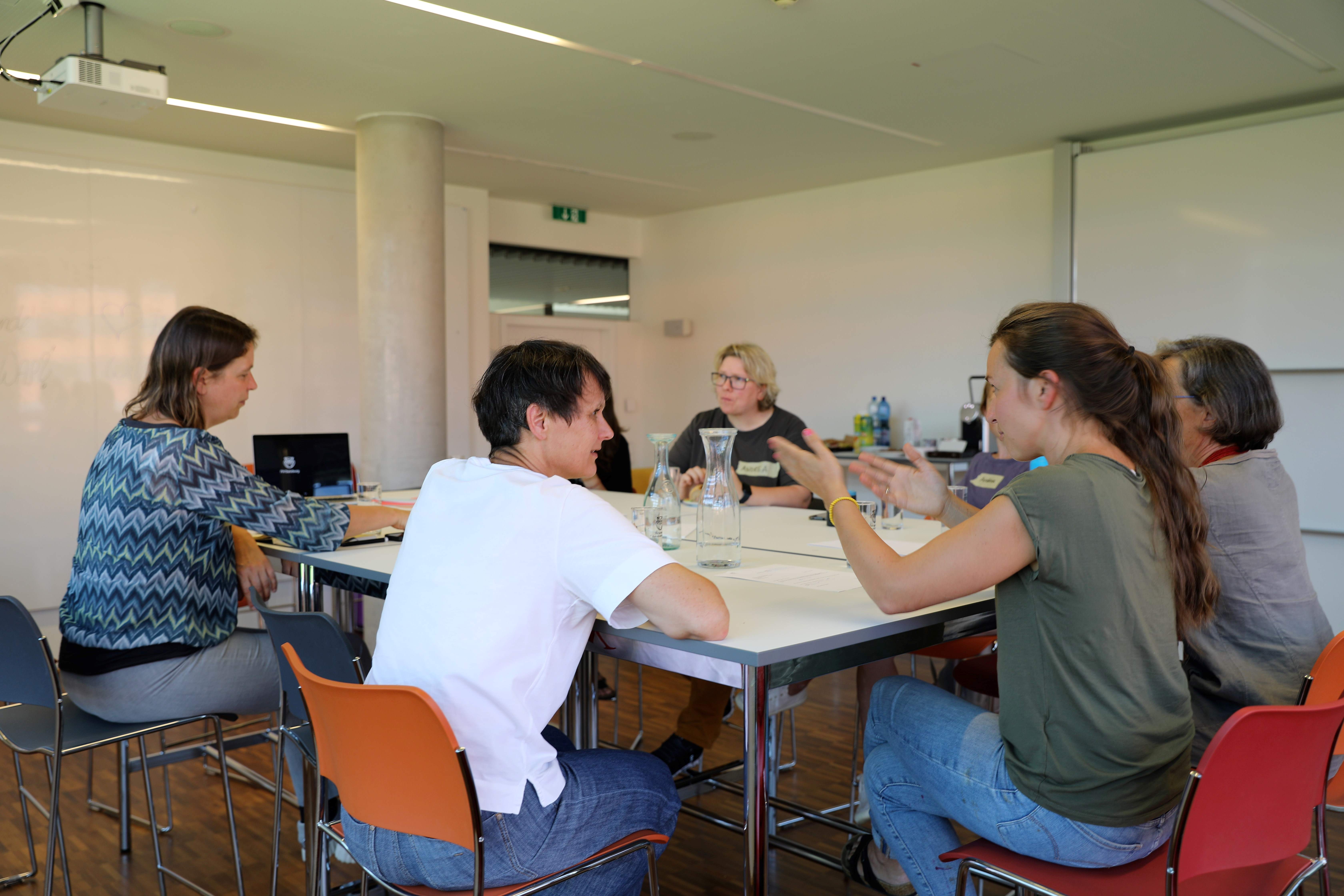 (c) BMA / FH Salzburg
(c) BMA / FH Salzburg
Roles within the project:
- Parents: This group takes on the role of those entitled to make decisions: How do I decide and how do I tell my child?
- Young people (student representatives): This group takes on the role and perspective of those directly affected when it comes to infection and vaccination.
- Teachers: This group forms an important intermediate link between parents and students in the transfer of information.
- Researchers: dissemination of information, science communication, support of citizen scientists, project implementation & workshop moderation
Citizen Science Award 2024
The project is also participating in this year's Citizen Science Award. School classes from the 4th grade onwards & individuals can take part from April 1st, 2024 to July 31st, 2024 and win the Citizen Science Award with prize money of up to € 1.000. Participants are invited to create a short video about HPV for social media and send it to the researchers. The three best videos will be awarded a prize and used for the awareness campaign. Register now to take part in the award: This email address is being protected from spambots. You need JavaScript enabled to view it..
Results
The results of the project are available on the project website and on the FH Salzburg website and were presented at an event together with the citizen scientists in November 2023.
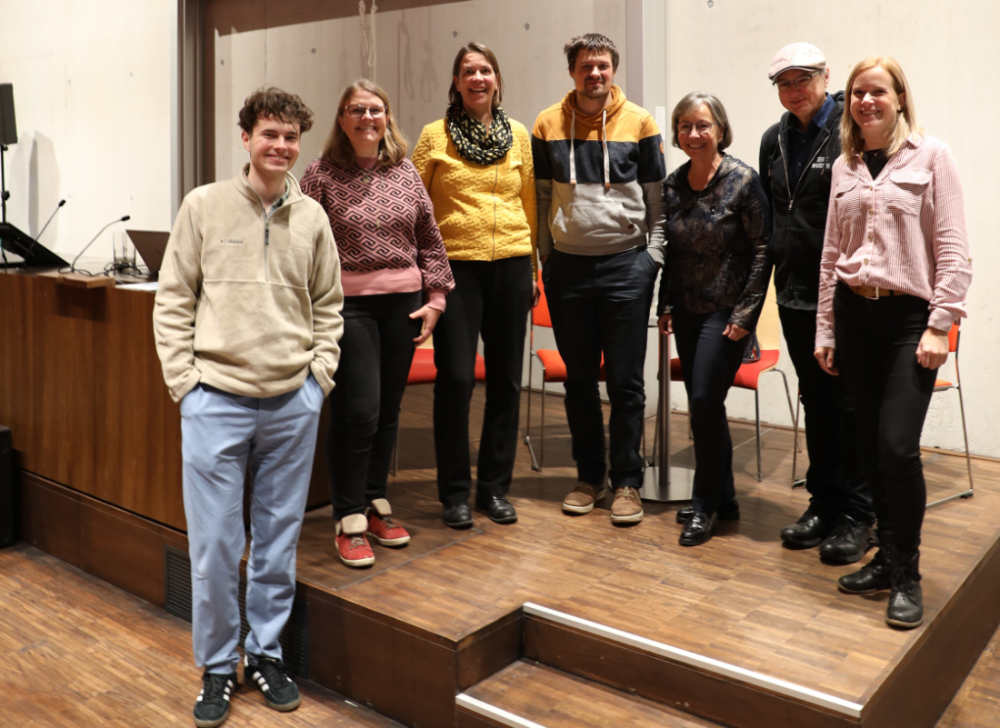
(c) Elena Franke / FH Salzburg
Podcast
If you would like to learn more, you can listen to the "Wissen macht Leute" podcast episode about the project (in German). More information can be found here.
The project also has its own podcast. You can listen to it on Spotify: https://open.spotify.com/show/5TdAebPNRHev8PtR8jLzTh.
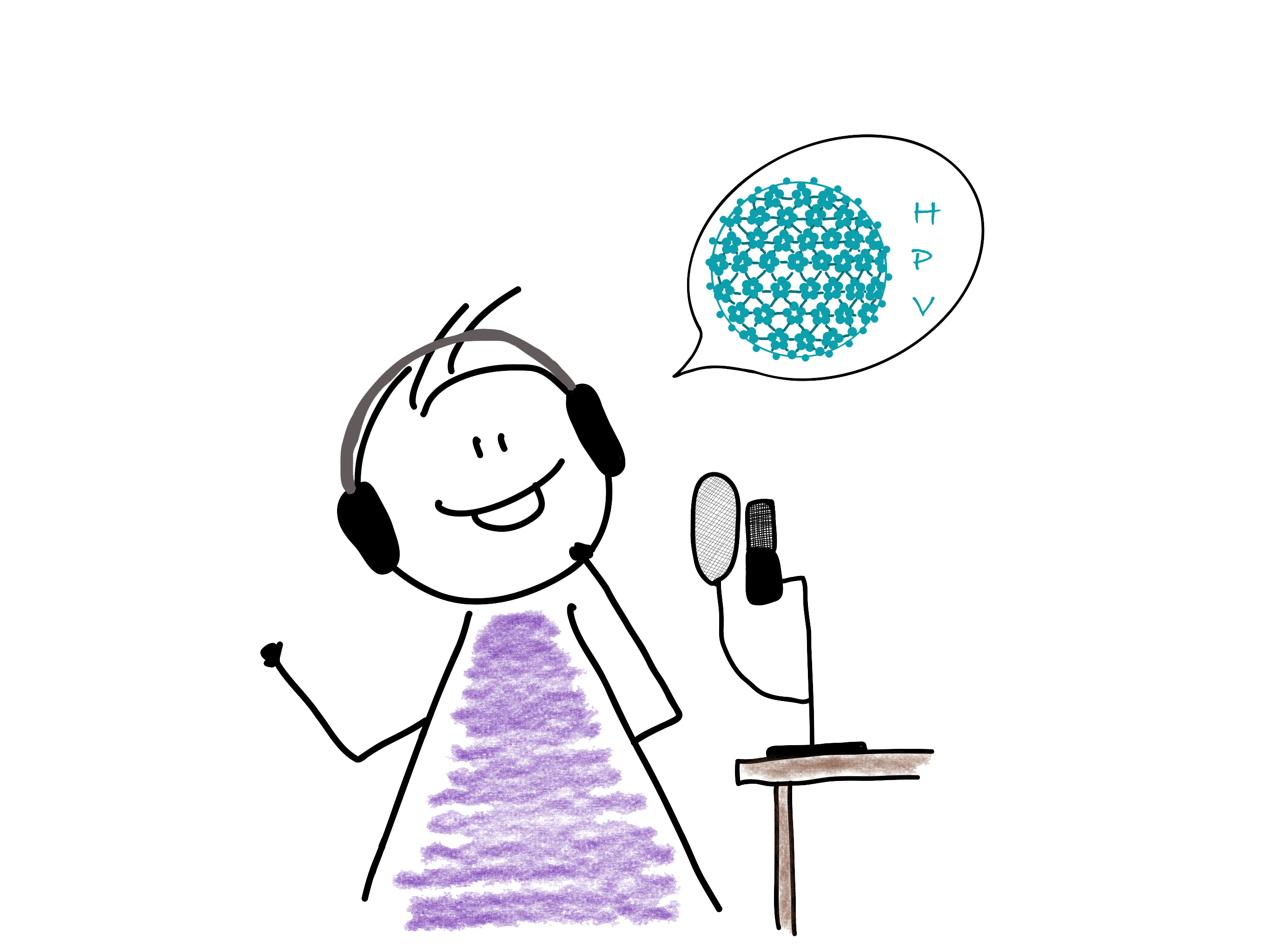

AmphiBiom
The AmphiBiom project is focused on the study of the European green toad in Austria. With the support of Citizen Scientists, we investigate the distribution of this endangered amphibian species, which, as a typical pioneer species, can quickly colonize newly emerging water bodies.
Therefore, the European green toad is an ideal species for projects to investigate the distribution status through call monitoring and the installation of small water bodies with the support of the Citizen Science Community. With AmphiBiom we want to show that everyone can support the survival of this protected species with just a little effort. Already through these small but valuable measures, the general awareness that is needed to better understand species and habitat protection measures, is strengthened.
Project background
Amphibians are among the most threatened animal taxa in Austria and worldwide. The reasons for this include habitat destruction and degradation, fungal diseases, and changes in land use. For some amphibian species, despite many disturbances, agricultural areas or even cities also represent important habitats. The natural spawning grounds of the European green toad, are steppe lakes filled after rainfall or ponds formed after flooding with strong sunlight. With a few exceptions, the natural spawning habitats of the European green toad have largely disappeared in Europe. In addition to these near-natural water bodies, artificial water bodies or puddles filled after rain showers are often accepted by European green toads today.
The importance of alternative habitats
The disappearance of fallow land and closure of gaps between buildings, leads to a deterioration of the conservation status of the green toad in rural areas as well as in inner-city areas. Countermeasures, such as the provision of replacement habitats, can prevent this negative development. The initiative for the creation of small water bodies, which is scientifically accompanied in the AmphiBiom project, not only forms an additional spawning offer for green toads and other threatened amphibians (e.g., Yellow-bellied toad). It gives us the opportunity to study the succession and progressive colonization of water bodies by diverse pioneer fauna.
The contribution of AmphiBiom to the conservation of the green toad
This project uses Citizen Science to study this pioneer species in order to investigate its distribution in areas that are often inaccessible for research (e.g., private gardens) and to actively involve citizens in the project.
In addition to creating new habitats for the green toad and other amphibians, we are also using the power of citizen science to launch an Austria-wide, app-based amphibian call monitoring programme. With its high-pitched warbling, the green toad is certainly one of the most beautiful calling amphibians in Austria, but it is not the only one with a characteristic song. For example, tree frogs and toads can also be clearly identified by their song. As part of the AmphiBiom project, we invite interested people to use our mobile phone app "AmphiApp" to record amphibian calls in their neighbourhood and thus contribute to the knowledge about the distribution of these protected animals.
In a further step, the complementary evaluation of already existing protection measures will clarify in which areas such measures (still) make sense, or where they could contribute to the resurgence of populations classified as extinct.
Podcast episode
If you would like to learn more, you can listen to the Wissen macht Leute podcast episode about the project (in German). More information can be found here.

Dieses Projekt wird durch den Biodiversitätsfonds des Bundesministeriums für Klimaschutz, Umwelt, Energie, Mobilität, Innovation und Technologie gefördert.
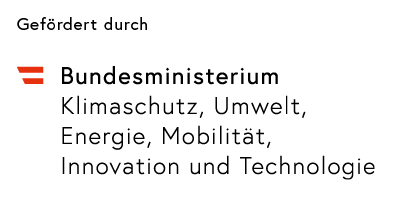

Garden dormouse
Wanted - Garden dormouse in Vorarlberg
The garden dormouse, which is active at dusk and at night, has probably the most contrasting coat colouration among the small mammals in our latitudes. It prefers coniferous and mixed forests with rocky ground as its habitat. Little is known about its occurrence in Vorarlberg.
In a citizen science research project, the inatura - Erlebnis Naturschau Dornbirn was therefore searching for the garden dormouse in Vorarlberg in cooperation with the apodemus institute.
The "Garden dormouse" project has been completed. If you have spotted a garden dormouse, your observations are still welcome and you can report them on the laendlemaus.at platform.
My Tune
Music therapy from our perspectives
“My Tune“ was a participatory research project in the field of music therapy (MT), which was carried out at the WZMF* and funded by the Ludwig Boltzmann Gesellschaft GmbH in the frame of the “Patient and Public Involvement and Engagement in Research 2021” call.
From March 2022 to April 2023, the “My Tune” research team developed a MT assistive reflection tool for young adult service users, namely the “My Tune” tool. The team consisted of:
- WZMF researchers Julia Fent & Irene Stepniczka,
- the co-lead team (steering committee: two young adult service users, one caregiver, two music therapists), and
- the co-creation team (three young adult service users, four music therapists).
The “My Tune” tool set comprises a short information for service users, a handbook for music therapists, and two parts of structured action:
- Part 1 is an interactive module for service users and music therapists that stimulates the service users‘ reflections on their MT processes in a creative as well as structured manner: Starting off from a memorable situation in their MT, service users are invited to make this memory more present by musically improvising, drawing, or bodily performing on the situation. The service users can then work on the situation of choice along pre-formulated question and answer cards together with the therapist. The answer cards also include an option for a free formulated reply. As such, Part 1 of the tool not only provokes personal reflection about topics that might not have been in focus before but also encourages the interaction between the service users and their music therapist.
- Part 2 of the tool consists of a set of cards posing questions for reflection for the service users that is processed on their own and addresses the role of music in the service users’ lives, their experiences in their music therapy, and the impact of their music therapy on their everyday lives.
Additionally, if wanted, the service users may e.g., take notes in a diary, make drawings, etc. to preserve their thoughts and feelings and share them with their therapist. This way, the “My Tune” tool empowers the service users by letting them decide if, when, where, what, how, and to what extent the tool is being used.
Besides the developed and tested “My Tune” tool the project also brought diverse and valuable insights into participatory research practice in the field of music therapy that will feed into future projects and research as well.
Podcast episode
If you would like to learn more, you can listen to the Wissen macht Leute podcast episode about the project (in German).
*WZMF – Music Therapy Research Centre Vienna, Department of Music Therapy, mdw – University of Music and Performing Arts Vienna, Vienna, Austria
Related publications:
Fent, J. & Stepniczka, I. (2022). My Tune – „Musiktherapie aus unseren Perspektiven“. Musiktherapeutische Umschau, 43(3), 258–260.
Fent, J. & Stepniczka, I. (2023). Participatory research in music therapy: Potentials and challenges in “My Tune”. Music Therapy Today, Special Issue: Proceedings of the 17th World Congress of Music Therapy, 18(1), 317–318.
Stepniczka, I. & Fent, J. (2023). “My Tune” – music therapy evaluation from a novel perspective. Music Therapy Today, Special Issue: Proceedings of the 17th World Congress of Music Therapy, 18(1), 325–326.
Stepniczka, I. & Fent, J. (2023). “My Tune: Music Therapy from OUR Perspectives”. PoS ACSC2023, 005. doi: 10.22323/1.442.0005.










